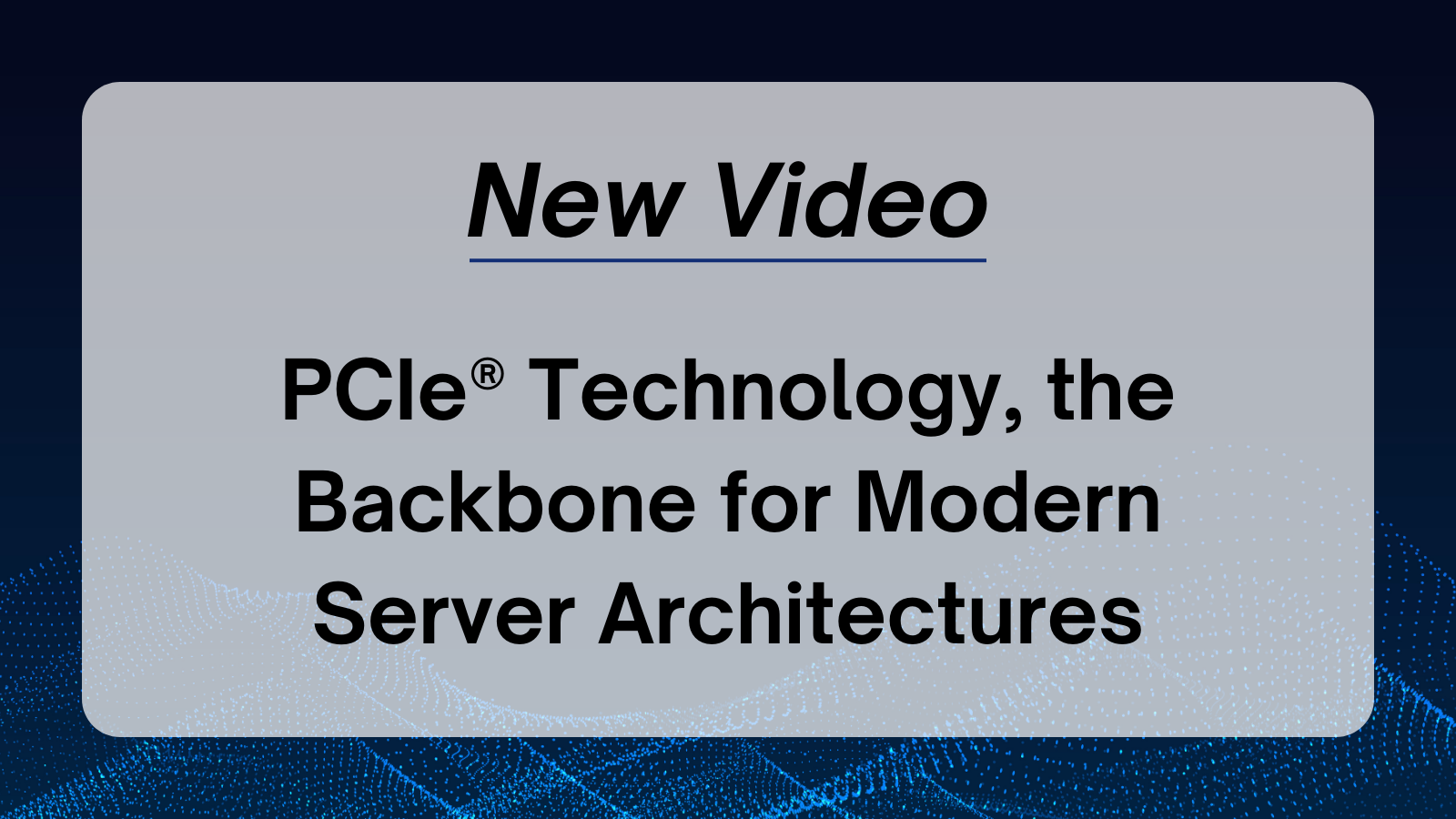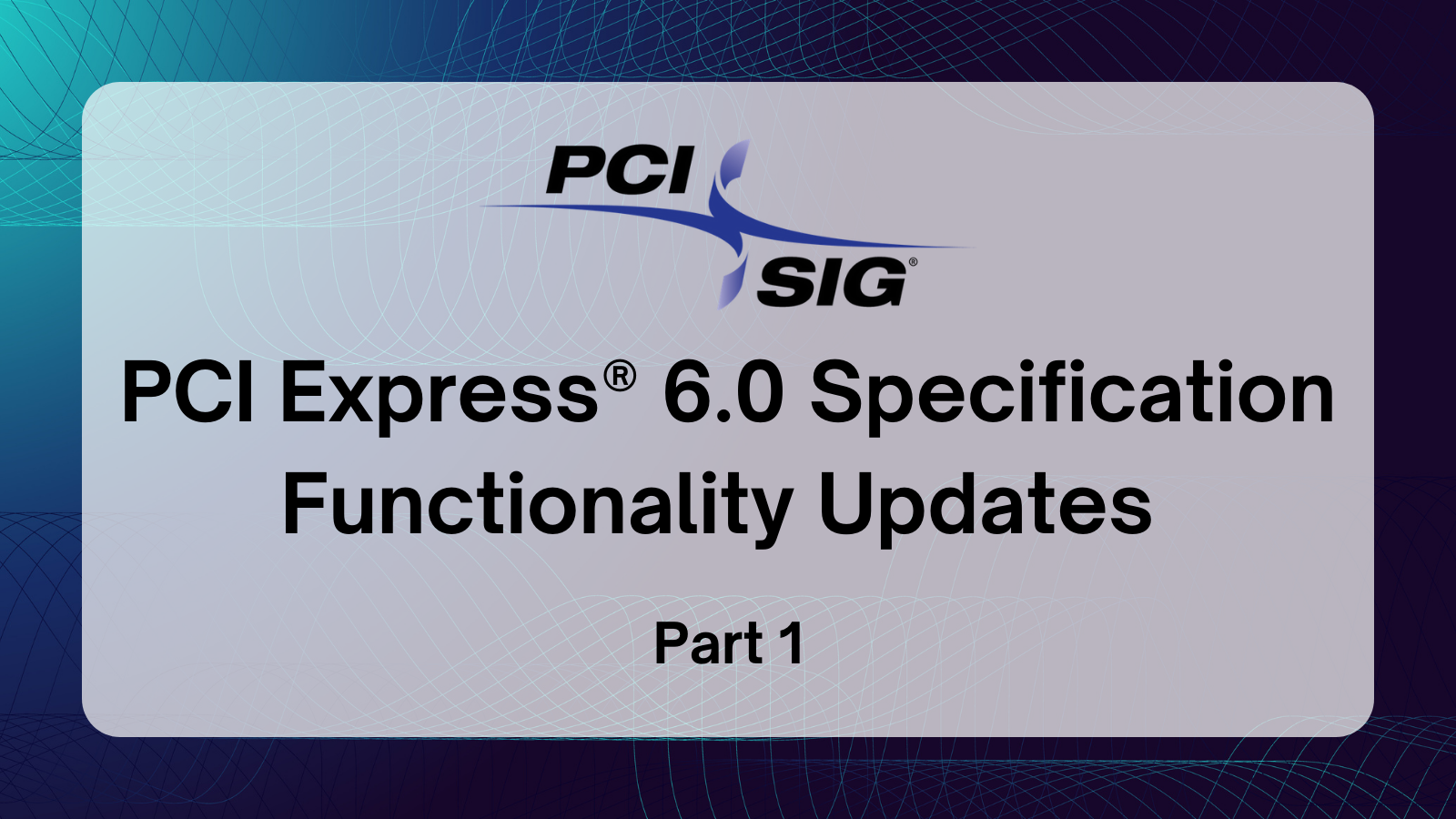Latest Posts

Servers are challenged to process more intricate and diverse types of workloads in cloud, hybrid-cloud and enterprise data centers.
- Systems & Applications
- AI
- Data Centers
- Servers
- PCIe 5.0 specification
- PCIe 6.0 specification
- PCIe retimers

Author’s Note: This blog discusses new functionality introduced in the PCIe 6.0 specification, but please note that the PCIe 6.0.1 and PCIe 6.1 specification revisions have been published.
- PCI Express Specification
- PCI Express 6.0 Specification
- PCIe 6.0 specification
- PCI Express 6.0
- PCI Express 6.0 Forward Error Correction
- PCIe 6.0 FEC
- FLIT Mode
With global health and safety concerns related to the Covid-19 pandemic still greatly limiting in-person events in 2021, PCI-SIG® continues to offer compliance workshop opportunities to our members virtually.
- Standards & Compliance
- PCIe 6.0 specification
- PAM4 signaling
- PCIe 6.0 architecture
- PCIe form factor
- FLIT Mode
- PCIe FEC
With the widespread adoption of compute-intensive workloads – such as artificial intelligence and machine learning – in enterprise and cloud data centers, high-speed, low-latency interconnects like PCI Express® architecture are required to connect high-performance nodes.
- Standards & Compliance
- PCIe 4.0
- PCIe 5.0
- PCIe retimers
- PCIe redrivers
- PCIe 5.0 specification
PCI-SIG has built its reputation on delivering high quality PCI Express® (PCIe) specifications that have doubled bandwidth on average every three years, while maintaining full backwards compatibility with prior generations.
- Signal Integrity
- PCIe Lane Margining
- PCIe 4.0
- PCI Express 4.0
- PCIe Bandwidth
- PCIe retimers
- PCIe Test Equipment
PCI Express (PCIe®) has been widely adopted in a number of applications that range from small, power-constrained IoT sensors and mobile devices to servers and networking and communications equipment.
- Physical Form Factors
- M.2
- U.2
- CEM
- Networking
- Form Factor
